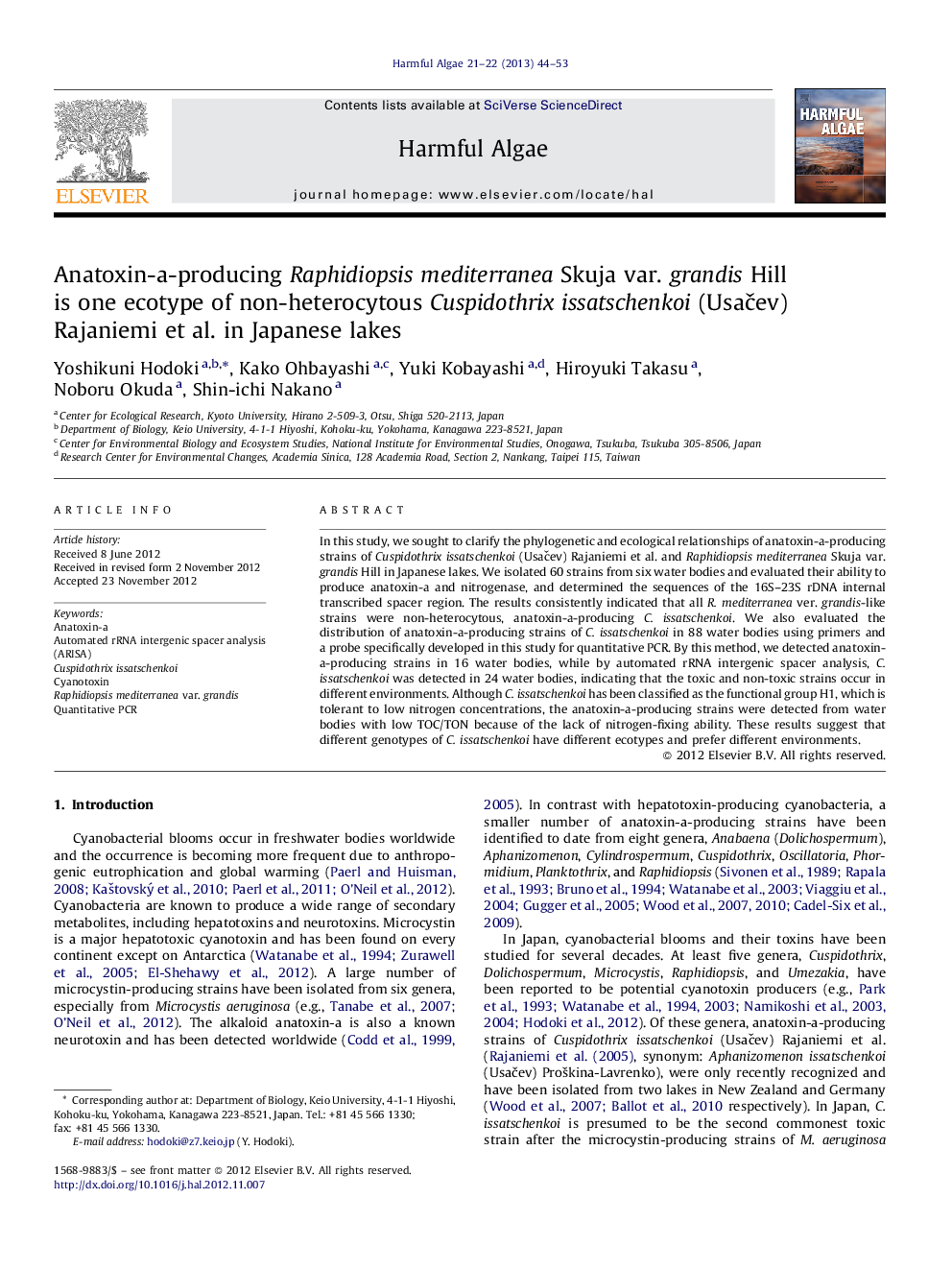| Article ID | Journal | Published Year | Pages | File Type |
|---|---|---|---|---|
| 4545493 | Harmful Algae | 2013 | 10 Pages |
In this study, we sought to clarify the phylogenetic and ecological relationships of anatoxin-a-producing strains of Cuspidothrix issatschenkoi (Usačev) Rajaniemi et al. and Raphidiopsis mediterranea Skuja var. grandis Hill in Japanese lakes. We isolated 60 strains from six water bodies and evaluated their ability to produce anatoxin-a and nitrogenase, and determined the sequences of the 16S–23S rDNA internal transcribed spacer region. The results consistently indicated that all R. mediterranea ver. grandis-like strains were non-heterocytous, anatoxin-a-producing C. issatschenkoi. We also evaluated the distribution of anatoxin-a-producing strains of C. issatschenkoi in 88 water bodies using primers and a probe specifically developed in this study for quantitative PCR. By this method, we detected anatoxin-a-producing strains in 16 water bodies, while by automated rRNA intergenic spacer analysis, C. issatschenkoi was detected in 24 water bodies, indicating that the toxic and non-toxic strains occur in different environments. Although C. issatschenkoi has been classified as the functional group H1, which is tolerant to low nitrogen concentrations, the anatoxin-a-producing strains were detected from water bodies with low TOC/TON because of the lack of nitrogen-fixing ability. These results suggest that different genotypes of C. issatschenkoi have different ecotypes and prefer different environments.
► Anatoxin-a-producing strains of Raphidiopsis mediterranea were reevaluated. ► Most of the strains were non-heterocystous Cuspidothrix issatschenkoi. ► The toxic strains were detected from water bodies with low TOC/TON. ► Different genotypes showed different ecotypes and preferred different environments.
